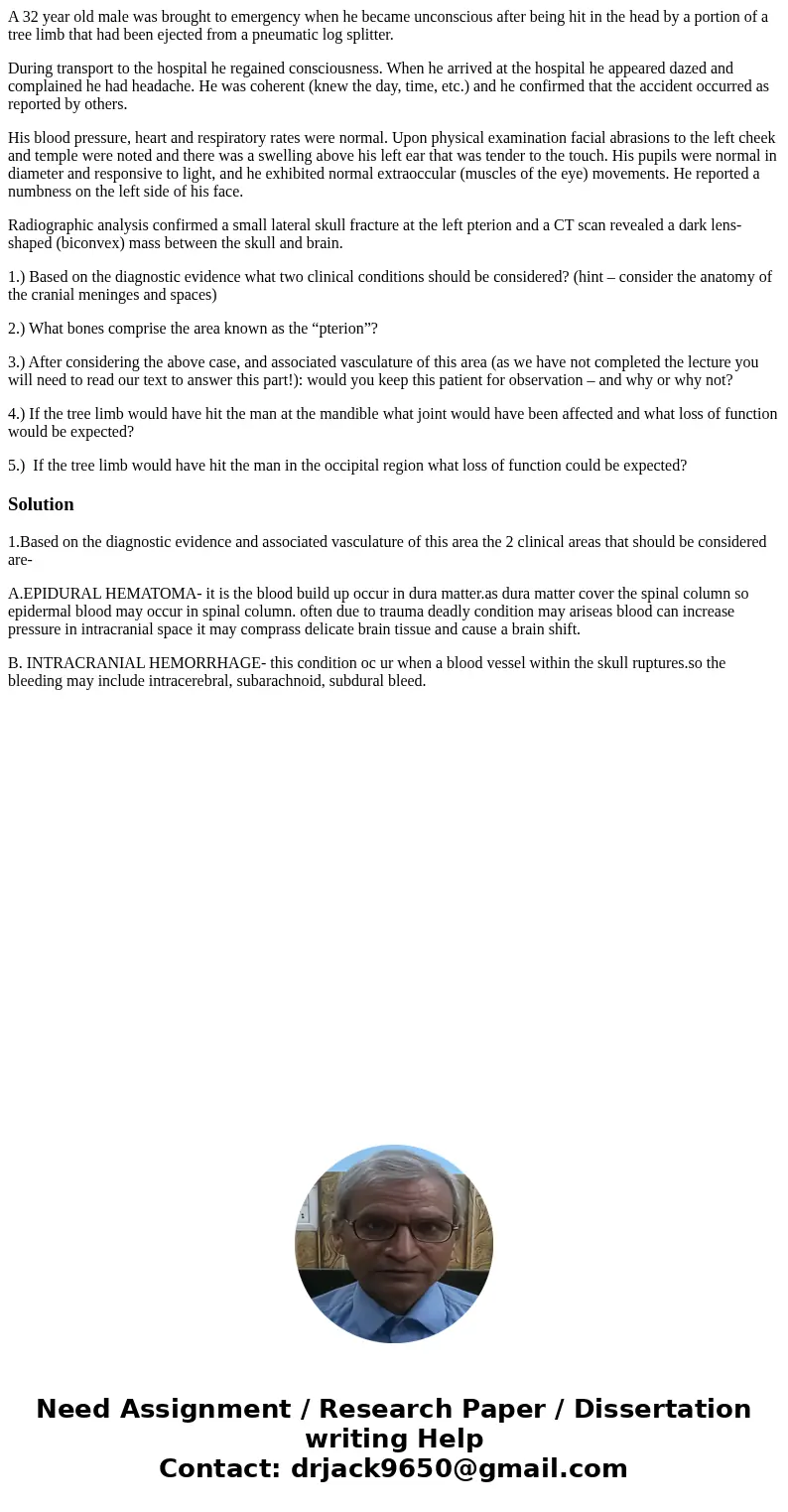A 32 year old male was brought to emergency when he became u
A 32 year old male was brought to emergency when he became unconscious after being hit in the head by a portion of a tree limb that had been ejected from a pneumatic log splitter.
During transport to the hospital he regained consciousness. When he arrived at the hospital he appeared dazed and complained he had headache. He was coherent (knew the day, time, etc.) and he confirmed that the accident occurred as reported by others.
His blood pressure, heart and respiratory rates were normal. Upon physical examination facial abrasions to the left cheek and temple were noted and there was a swelling above his left ear that was tender to the touch. His pupils were normal in diameter and responsive to light, and he exhibited normal extraoccular (muscles of the eye) movements. He reported a numbness on the left side of his face.
Radiographic analysis confirmed a small lateral skull fracture at the left pterion and a CT scan revealed a dark lens-shaped (biconvex) mass between the skull and brain.
1.) Based on the diagnostic evidence what two clinical conditions should be considered? (hint – consider the anatomy of the cranial meninges and spaces)
2.) What bones comprise the area known as the “pterion”?
3.) After considering the above case, and associated vasculature of this area (as we have not completed the lecture you will need to read our text to answer this part!): would you keep this patient for observation – and why or why not?
4.) If the tree limb would have hit the man at the mandible what joint would have been affected and what loss of function would be expected?
5.) If the tree limb would have hit the man in the occipital region what loss of function could be expected?
Solution
1.Based on the diagnostic evidence and associated vasculature of this area the 2 clinical areas that should be considered are-
A.EPIDURAL HEMATOMA- it is the blood build up occur in dura matter.as dura matter cover the spinal column so epidermal blood may occur in spinal column. often due to trauma deadly condition may ariseas blood can increase pressure in intracranial space it may comprass delicate brain tissue and cause a brain shift.
B. INTRACRANIAL HEMORRHAGE- this condition oc ur when a blood vessel within the skull ruptures.so the bleeding may include intracerebral, subarachnoid, subdural bleed.

 Homework Sourse
Homework Sourse